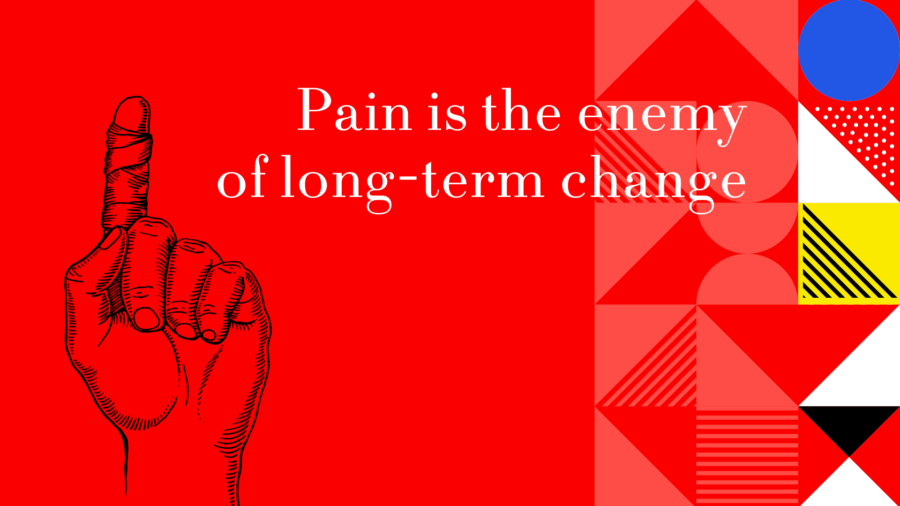Think about pain for a minute. How did you learn not to touch a hot stove? By touching it, right? And did you keep touching it?
No!
Because it hurt.
If doing something feels like a constant struggle or an assault on your sense of self—if it’s painful—it’s only a matter of time before you abandon it (ask anyone who’s tried hyper-restrictive diets like Whole30 or uber-strict exercise programs like 75 Hard!). That’s especially true if a change is dissonant with or undermines your desired smart, capable, and good self-image. When a change makes you feel otherwise, it’s not just painful—it’s also unsustainable.
Pain, whether emotional, physical, or psychological, is something we humans naturally seek to avoid. This instinct is crucial to remember when you want to inspire lasting change in others (or yourself). Painful changes, no matter how beneficial or good they may seem, rarely stick.
Why?
Because sticking with an action that continually causes discomfort goes against your basic human nature.
However, it’s important to distinguish between painful behaviors and harmful ones. Many of us have sustained harmful behaviors, such as I did with smoking and eating back in my 20s, over months or years. Those behaviors may hurt you, but unless you feel that hurt, you usually don’t stop them. It’s only when something about the behavior becomes too painful—as it might if the behavior put a more important identity you have, like “keeping my kids safe and healthy,” at risk—that you are driven to stop it.
Thankfully the solution is in the problem: the less painful a change is, the more sustainable it is.
When you’re working to create change with others, the more you reframe a change to reduce emotional, mental, and—where appropriate—physical pain, the more the change will align with a person’s inherent desire for stability and well-being.
This doesn’t mean you can avoid or even eliminate all discomfort or effort. No matter how much you work to reduce the pain of a change, it’s always going to require effort to shift thinking or behavior. But discomfort and effort are different from pain in that people are willing to tolerate both or either, even over time, if they consider the outcome worthy enough—just ask your marathon-running friend!
That said, the more you can reduce that effort or the discomfort someone might feel mentally or emotionally as a result, the easier the change will be.
How do you put this principle to work in the real world?
Reduce the scale of the actions you ask for so that they’re below the threshold of pain—so that the steps required to make the change don’t feel dissonant with someone’s normal behaviors or daily life. The mantra I use: “Reframe to reduce pain.”
If it’s a stakeholder’s actions you need, test every proposed change with questions like, “Is this action sustainable for them? Can they do it without a constant struggle?”
When you pursue changes that respect the existing habits and beliefs of the people you’re trying to influence and avoid creating continuous discomfort, even transformational change becomes both possible and sustainable. You’re also much more likely to craft a case that’s grounded in the empathy and understanding that help build the base of lasting change.
IN OTHER WORDS…Humans are wired to avoid pain—both in the moment and over time. Ask for the largest action that’s easiest for stakeholders to sustain.
P.S. Guess what?! What you just read was an excerpt of my new book, Say What They Can’t Unhear. It’s coming out October 8, 2024! But I’m booking talks and workshops NOW. If you want your organization or association to be one of the first to hear this new talk—and to learn everything you need to know about people to build buy-in for change that lasts—reply to this email and let me know!
